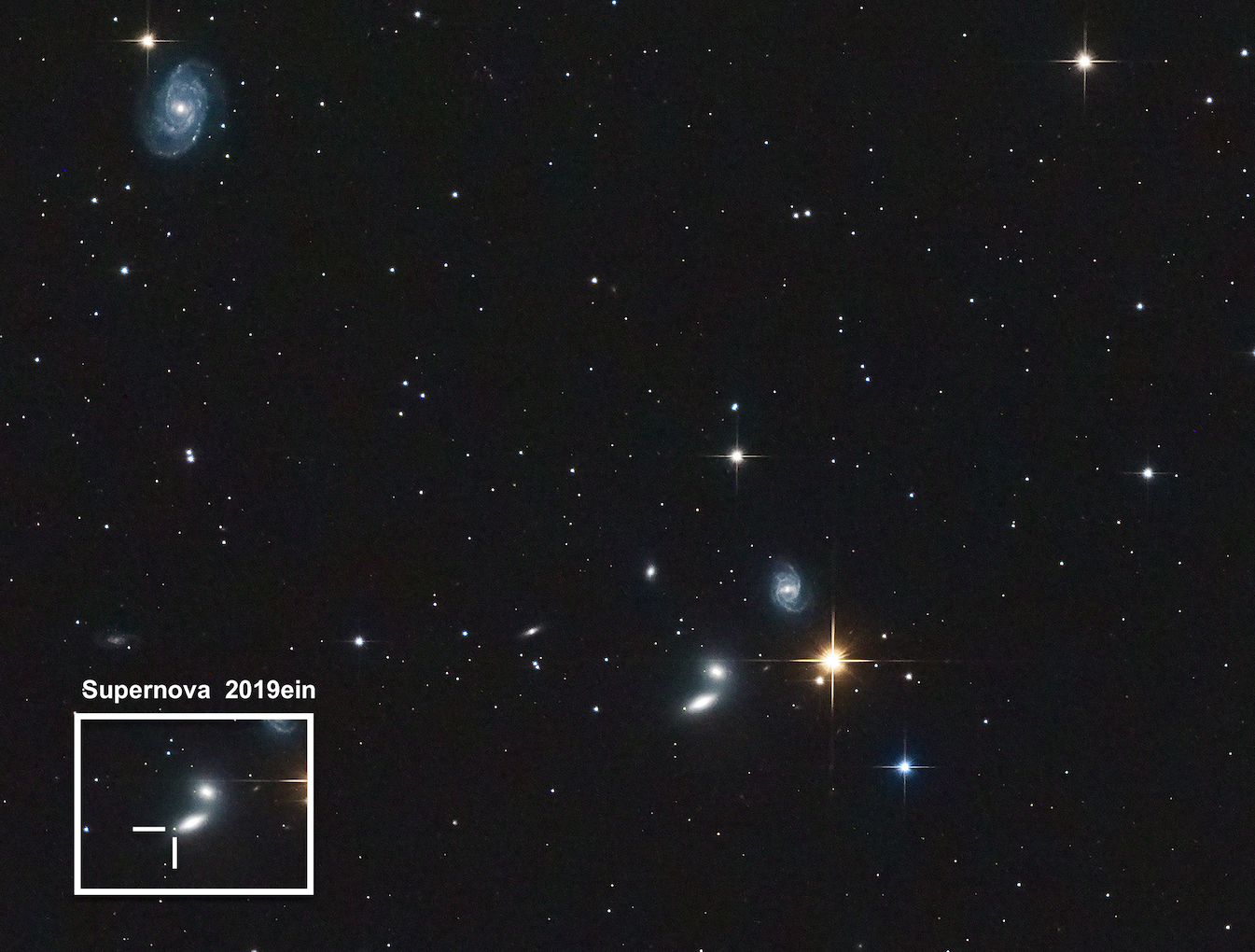
Hi, Jasem.
Thanks for the quick reply. I studied the GPhotoII page and see that the Sony Alfa 7RV isn't supported yet.
Also, I prefer using the Sony DSLR driver, but maybe this one is based on the GPhotoII driver?
Let us see what we can do.
Geetings from Andorra
Alexander
Read More...
Good afternoon!
This week I purchased a Sony Alfa 7RV, the newest product in the Sony A7-line.
Of course I want to use this camera with indilib. I have already good results with the Sony Alfa 6300, using the Sony DSLR indi-driver.
I use the camera in combination with the following devices:
- Celestron CGX
- Baader Steeldrive II
- SX CCD
- ZWO CCD
With the Sony 6300 this setup works perfectly.
Configuring the Sony A7RV for remote shooting and using the same USB cable, the camery is not recognized by INDI. In EKOS (KStars) the Sony tab does not show. Also I have a connection failure for "Sony DSLR" in the log window.
If I use the INDI GPhoto driver, the GPhoto-tab shows up, but after about 2 seconds it disappears and a second "Baader Steeldrive II" tab appears. From this moment, things become instable.
My setup consists of an external INDI server, running on a Raspberry Pi 4, using RPI OS "Buster" and updated with "apt". This server communicates with a "Rock 4 c+" single board computer with Ubuntu-20. On this system runs my KStarrs-EKOS client without any problems. Both systems are connected with Wired, Gigabit ethernet to our home-router.
About the camera:
I could communicate once, using GPhoto driver, but from here nothing works. I upgraded the camer's software from 1.00 to 2.00 to be sure to have the latest features installed.
Also I connect the camera without any problem to Sony's "Imaging Edge Desktop" version 1.2. All function work remotely.
I hope I have reported all details.
My question is: Has somebody tried out the usage of the Sony Alfa 7rV with INDI server?
Any help is welcome!
All the best and clear skies,
Alexander
Read More...
Just to add one observation: After copying the vsop87 data to the parent folder and deleting the (now empty) folder itself, the folder is recreated with content at the next execution of Kstars. This is not a problem for me, but just tp complete my report.
Cheers,
Alexander
Read More...
Good morning, Rob
You made my day!
Your proposal is working! Thanks a lot for your help and time!. Now I can use my new setup with a Raspberry Pi 4 as INDI server and my Mac as client with my new CGX-L mount.
I am the first to understand the problems which could occur in team-development. I was 43 years in this business and retired last year as CIO for an Andorran governmental institute.
Please let me know when you have released the fix, I will be helpful to test it. That's the minimum I could do ![]()
I hope our thread will help other people, using this great application Kstars!
Happy new year 2022 and all the best,
Alexander
Have a nice day and
Read More...
Hi Rob
Thank you for the help.
I tried your proposal. Unfortunately, the situation is the same: No planets and Sun, only the Moon is present. If you ask to go to the Sun, Kstars says that the object is currently under the horizon. I checked the configured location and it is set to my location here in Andorra.
I start to believe that this build of Kstars for the Mac is not complete. Later today I'll try to look for a previous version or will try to copy the files from my Raspberry Pi (if these are compatible).
I keep you and the forum informed,.
Merry Christmas!
Alexander
Read More...
Another observation: This problem is really Mac specific.
I installed Kstars at a Raspberry Pi with PRI OS "bullseye" and planets are visible. All is working well, despite the toolbar icons which are missing.
This problem can be fixed by installing the KDE "breeze" theme as follows:
sudo apt-get install breeze-icon-theme
Source: www.tanstaafl.co.uk/2019/08/missing-icons-in-kstars-and-ekos/
Any help for the Mac is welcome!!
All the best,
Alexander
Read More...
Just to add one element: The Moon is visible and slewing in EKOS works correctly.
Cheers,
Alexander
Read More...
Good afternoon!
Just installed KStars 3.5.6 on the Mac in order to use this client with EKOS for my setup with an INDI server at a Raspberry Pi 4.
All is working well, but no planet is visible in the KStars app. In EKOS, trying to slew to a planet, like Jupiter, the mount is sent to the anti-zenit. All planets seems actually to be in the constellation "Columba".
I searched this forum and other sites, but no results.
I installed KStars 3.5.6 stable from URL
edu.kde.org/kstars/
I seems that the planet data files are missing. I switched on the solar system objects.
Has somebody an idea how to fix this problem?
Thanks a lot for any help!
Greetings and all the best from Andorra
Read More...
Hi, Jasem
Thank you really for the fast response.
Today I could do some testing and tried to set the SD card to "Delete".
Having the Raspberry Pi running, I powered up the camera with an SD card mounted into the camera. Connected to RPI with USB, via powered hub.
I started the INDI server (web interface) and started kstars.
In kstars I called EKOS and started the profile. All devices connected correctly.
I performed several previews with the Sony alfa 6300. All worked correctly, without any old image being displayed and downloaded.
So far so good!
Let me see if the error has been solved this way. Tonight no clear skies. We'll see next week, but the weather forecast for Andorra is not quite in favor of deep sky imaging.
Anyhow, thanks for the hint, I'll keep you up to date.
All the best,
Alexander
Read More...
Good afternoon everbody.
Since half a year I use INDI server at a Raspberry Pi (RPI )with Raspbian "Stretch". As camera I use a Sony Alfa 6300, connected to the RPI via USB. This combination is controlled with kstars and EKOS at a Mac. Images are taken at the EKOS panel.
Lately, I have trouble to get the latest image from the camera. The camera connects correctly and answers to the commands. Exposure time, ISO setting and other parameters are set the right way. Neverheless, using "Preview", the downloaded (and displayed) image is not the latest one. It seems that an image gets "stuck" in a kind of cache and this one is downloaded every time, despite the camera, which changes correctly the exposure time and executes it, followed by a download of the old, stuck image.
Repeatedly disconnecting and connecting the camera, combined with closing and restarting kstars fixes the problem finally, but it can happen that this takes abouthalf an hour, which is valuable clear sky time.
I tried to operate the camera without SD card to discard the possibility of having a stuck image stored in this card, but without success. Thee problem persists. Also, I played with the Sony DSLR driver configuration in the INDI control panel, but without success.
I also tried to change the automount policy in Raspbian, editing the file pcmanfm/LXDE-pi/pcmanfm.conf to set the automount and startuo moubnt parameters at zero, but without succes.
Some details about my equipment:
- Raspberry Pi B3 with Raspbian "Stretch", latest updates applied. Connected to LAN with ethernet cable (cat 6)
- INDIlib 1.7.4
- Gphoto2 versions: , gphoto2: version 2.5.11, libgphoto2: 2.5.12, libgphoto2_port: 0.12.0
- INDI server web manager to stop/start the service and to configure profiles
- Camera: Sony Alfa 6300, connected to RPI with USB cable. Tried with and without powered HUB. USB mode set to "Remote" (no "Mass storage")
- kstars version 3.2.1, build 2019-04-24T18:40:46Z at MacBook pro with OS/X "Mojave", version 10.14.5, connected to LAN via 5 GHz WiFi
Other equipment at the RPI, connected to EKOS, like EQMOD mount, Baader Steeldrive focuser and LodeStar SX CCD for guiding are always working correctly. These devices are connected the same way via USB and managed in kstars at the Mac and EKOS.
My Questions:
- Has anybody had the same or similar behavior with Sony DSLRs (or even other marks) ?
- Should I change the gpoto2 settings in file ~/.gphoto/settings to change line "libgphoto=cached-images=2" to "libgphoto=cached-images=0" ?
- Is there another solution for this problem, e.g. by changing a configuration?
Maybe you need more details to investigate this problem. For the moment I would be pleased to receive some hints. The Sony Alfa 6300 is a perfect camera for deeep sky photography in the primery focus of a 200 mm F4 Newton. I enclose the photo of NGC5353 with supernova 2019ein to show what is possible.
Thank you very much for any help!
Clear skies and greeting from the Principality of Andorra.
Alexander
Read More...
Basic Information
-
Gender
Male -
Birthdate
28. 12. 1955 -
About me
Living in Andorra in the village of Juberri (Sant Julià de Lòria). Clear skies and few light pollution are features in my country. That's why I reactivated an old hobby: Astronomy. I know the difference with other countries, like the Netherlands where I was born.
My interests are especially deep-sky photography. Main equipment: GSO Newton 200 mm / F4 on NEQ6 Pro (belt drive modified) with EQMod, ATIK 383 L+ BW, Starlight XPress Mini USB filter wheel, Lodestar X2 guider in the focus of an Orion mini-guide scope. All the equipment is controlled with a Raspberry Pi 3, running INDI server with EQMod, SX Wheel, ATIK 3xx and Lodestar X2 with lin_guider.
Also I am a big fan of Sony NEX and Alfa cameras. The Sony NEX 5R (unmodified) is a very suitable camera for deep-sky photography with my Newton.
Contact Information
-
City / Town
Juberri, Sant Julià de Lòria -
Country
Andorra





